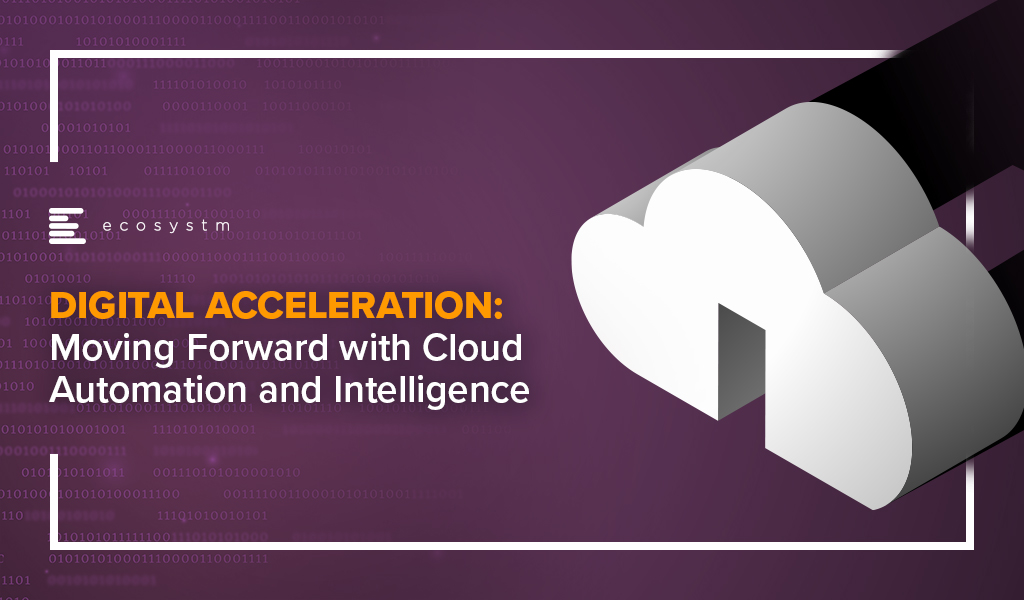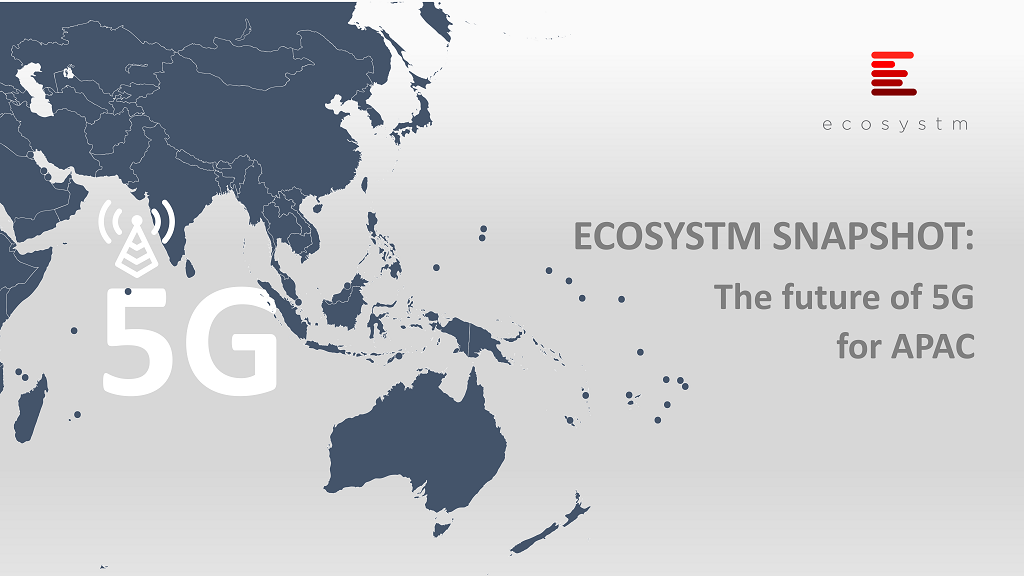Focused on Digital Transformation? It is now more about how fast you can react to market shifts by using specific infrastructural resources.
This period is about digital acceleration. Cloud automation, artificial intelligence (AI), robotic process automation (RPA) and machine learning are all means to accelerate using infrastructure scalability.
Digital acceleration addresses the pace of change
Enterprises are searching to find unique and innovative ways to leverage cloud infrastructures with automation and intelligence. This is both to modernise and to optimise business processes while decreasing expenses. The speed at which the economic landscape has changed during the pandemic has removed debates on cloud usage:
- Remote work from home (WFH) with the need for video conferencing and collaboration tools has been supported by cloud
- Record amounts of SPAM and hacking attempts during the pandemic have leveraged cloud implementations for key security controls
- Tracking apps and classification and encryption of personally identifiable information (PII) via mobile devices are using cloud technology for greater automation and use of AI
Bandwidth and capacity are needed now. The ability to pivot, turn and shoot forward is critical to surviving and thriving in today’s radically changed marketplace. Cloud enablement can deliver enhanced customer experiences, monetise data assets, and can create new revenue streams by enabling new business models.
Cloud enablement explained
Digital acceleration is driven by cloud enablement, amplifying the enterprise value in the infrastructural investment.
Cloud enablement is an ongoing operational model. It incorporates orchestration, correctly organising teams, and a shift away from thinking only about platforms. The cloud platform is now a launchpad, not the main choice that has to be made. Orchestration is around the business and the business model, not just the technology.
Creating a cloud enablement strategic vision can identify where you need to go. It can provide the necessary requirements for expertise along the journey and deliver rapid, meaningful automation services engagements to deliver unbreakable delivery pipelines and agile cloud operations.
But this also involves managing and adjusting on the fly. Initial platform decisions, rolling out countless configuration changes and adjusting to new cloud investments make cloud enablement a tricky road to manage. Enterprises need to be cloud-smart towards their own business model and their strategy. Whatever configuration (on-prem, hybrid, private, public) combination works is dependent on many factors, including industry, size of the enterprise, employee resources and location.
The goal is implementing secure, flexible, scalable, and cost-effective cloud solutions. To do this requires regular cloud enablement audits as to the state of play and measuring successes.
Building and maintaining modern IT
Modern IT is hybrid and all the pieces that collect and manage the data need to be properly and securely managed. Just as technological (and economic) disruption has generally led to automation and the elimination of outdated processes, it has also always created new ideas and innovations.
One way to make your organisation more data-centric and digital is to selectively invest in those technology choices that are most adaptable and flexible to business needs. Data is the most strategic of assets and can be empowered by increasingly sophisticated intelligent operations. Process automation and AI help put that data to work by adding valued intelligence and encapsulating information.
Hybrid cloud coordination automated
Hybrid cloud coordination is an increasing enterprise demand, particularly in the Asia Pacific region, leading to enhanced data centres with joint customer support like the new Tokyo interconnection with Oracle and Microsoft Azure. The key to successfully monitoring a distributed cloud ecosystem is not only in gathering data on usage; it’s about knowing which questions to ask to make it more efficient and effective. This includes tracking connectivity speeds, creating common technical support and using single sign-on for better security. Here both AI and automation can help.
In Asia Pacific, the multi-cloud theme is being promoted heavily among integration providers with solutions that can plug into multiple clouds with virtual machine usage. Enterprises value enabled automated orchestration between cloud platforms. There will be a continued need for integrated tools across public and private clouds. This includes advanced analytics and AI as important aspects of an IT infrastructural investment.
Your choice of vendor for AI & Automation
In my opinion, AWS has the broadest AI service capabilities in the Asia Pacific cloud/ AI space, when compared to Microsoft, Google, and IBM. AWS provides users with pre-trained AI services for computer vision, language, recommendations, and forecasting to build, train, and deploy machine learning models at scale.
The Ecosystm VendorScope (Figure 1) rates the leading AI & Automation vendors in Asia Pacific based solely on quantifiable feedback from those who actually procure technology. It becomes clear from the responses that many organisations still start their AI journey through Automation. 
Most organisations understand the importance of leveraging AI to gain competitive advantage. But they do not necessarily know where to start. The secret is that AI is about intelligent process automation, and the firms who understand this are not the ones automating tasks. The use of RPA with vendors such as Antworks, WorkFusion, Arago and Automation Anywhere, leverages automated reasoning using knowledge-based problem-solving engines. These vendors add RPA to AI, not the other way around.
And domain-specific service providers have been creating the synergies for enterprises to link intelligent automation software and industry knowledge to create the necessary end-to-end workflows. An innate understanding of the specific business process is key to leveraging intelligent automation.
Focusing on developing a modern data supply chain process, with actionable analytics insights built into the infrastructure, can aid the development of self-service business intelligence capabilities along with visual data discovery solutions.
Cloud enablement solutions generate maximum business value by enabling IT with scalability and flexibility. This can reduce maintenance and security costs. A focus on cloud intelligence and scalability allows IT departments to concentrate more on innovative solutions, insights and systems that drive significant business growth. Now is the time, and speed is of the essence.
Ecosystm Vendorscope: AI & Automation
Sign up for Free to download the Ecosystm Vendorscope: AI & Automation report.

Roll Out of 5G will Contribute $900 Bn to APAC Economy over the next 15 years
According to a forecast by the GSMA Foundation, 5G will contribute almost $900 billion to APAC’s economy over the next 15 years. APAC’s edition of the GSMA’s Mobile Economy series published at MWC19 Shanghai revealed that Asia’s mobile operators will invest $370 billion – two-thirds of their overall investment in new networks – in building new 5G networks between 2018 and 2025. The report forecasts that the number of subscribers is expected to increase to 3.1 billion by 2025 with the main contributions coming from India, China, Pakistan, Indonesia, Bangladesh, and the Philippines.
The Roadmap for 5G
Every major Asia Pacific country has announced its intent or made the commitment to roll out 5G. The upside for an Asia Pacific digital economy is huge which will be driven by massive amounts of cross-cloud, inter-cloud, and smart infrastructure giving rise to the need for high-density connectivity between businesses and consumers.
“Take a step back and look at the key attributes of 5G – speed, latency, and density. Now take a step forward and look at global urban development. The explosion of bigger and more modern cities makes the telecom infrastructure a scaling issue for which 5G will be the right technology,” says Ecosystm Executive Analyst, Vernon Turner.
Working closely with the mobile operators pioneering 5G, governments are also engaging in the preparation and roll out of 5G Networks. Recently, the Singapore government announced to set aside SG$40 million to build up a 5G ecosystem. To promote digital transformation and economic growth, IMDA and the National Research Foundation (NRF) has allocated this funding for innovation, trials, R&D and enterprise use-cases in the 5G technology.
Similarly, the Vietnamese government awarded its first 5G trial licence to its largest telecommunications company, Viettel, to uplift the economy. Thailand is also seeking to deploy 5G and aims to start commercial 5G service next year.
“By 2022, 5G will be ‘the rising tide that lifts all boats’, making the Asia-Pacific region the biggest network offering network services that could give it an economic advantage,” says Turner. “But before that, some challenges for 5G belongs to regulatory approvals and the cost to build the next generation wireless network. For example, 5G networks operate on ‘millimetre waves’, a high radio frequency able to transmit large amounts of data but only over a short distance. To overcome this issue, governments have to approve large numbers of 5G small cells for operators to deploy.”
Is this an opportunity to skip out 4G altogether and leapfrog to 5G?
“The challenge for operators is to find workloads and applications that need 5G and at a price point that customers will pay. In my everyday travels, I have been underwhelmed by the number of customers ready to take advantage of 5G. Existing networks have the speed and capacity to run much of their businesses. I can see a scenario whereby operators will be forced to roll up 3G and LTE network functionality into 5G networks without being able to raise prices – despite being able to offer more benefits” says Turner.
How will 5G impact industries?
The future of interconnected ecosystems runs through IoT. The data that IoT sensors will create will be more valuable the faster it is analysed to produce business outcomes. Turner commented “Innovation accelerators such as VR (Virtual Reality) and AR (Augmented Reality) will generate new services for both consumers and industrial uses cases. The potential for asset management and services is ripe for disruption as 5G will bring more valuable information to workers through more efficient platforms. The knowledge-based worker and the future of work is here.”
Ultimately, APAC has the same possibilities and challenges as the rest of the world. Overall, the involvement of telecom companies, government organisations, infrastructure upgrades and the adoption of devices by consumers can affect the development and only after that can 5G become a reality.



